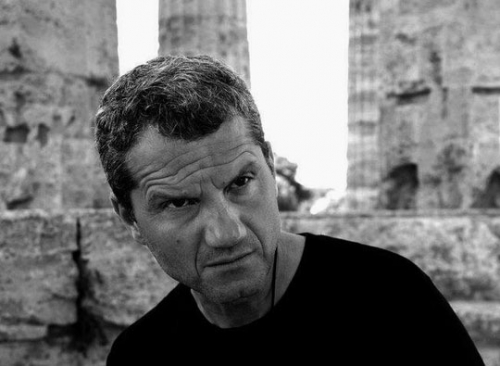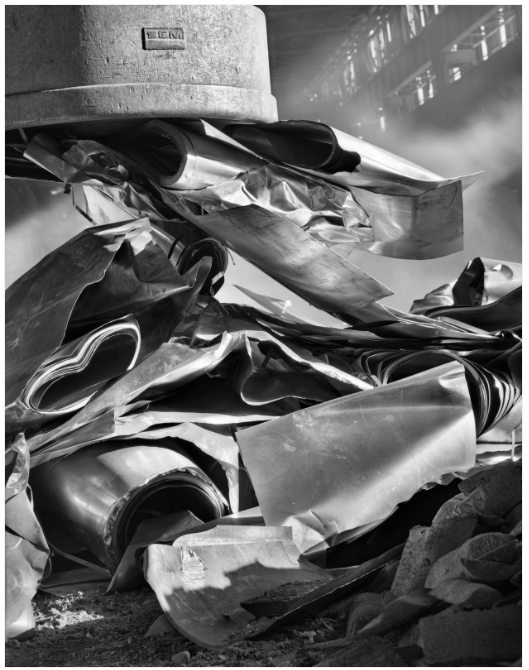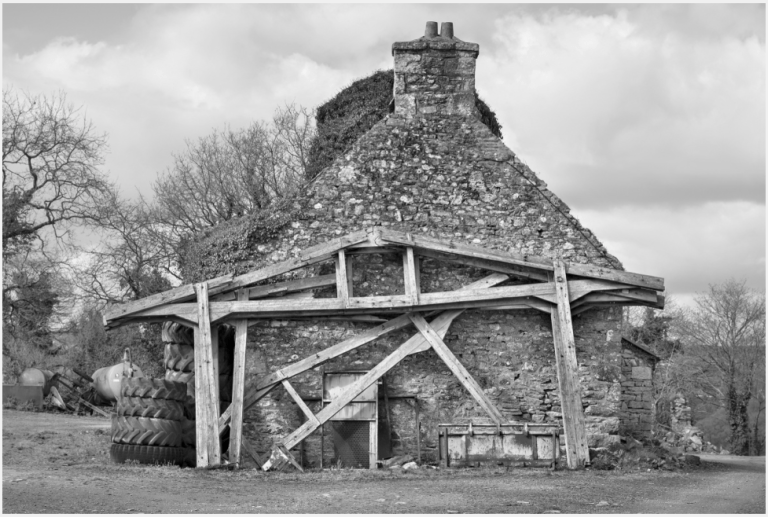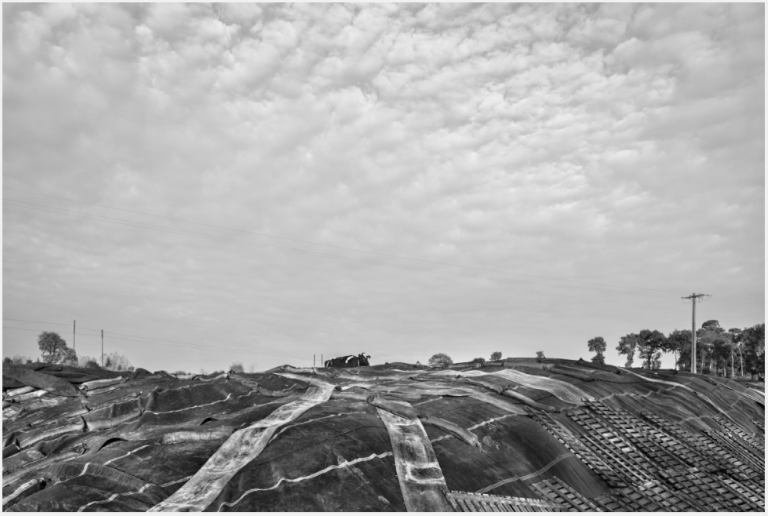 May 16: Photo London is about to commence, with previews tomorrow, 17 May 2017.
May 16: Photo London is about to commence, with previews tomorrow, 17 May 2017.
The Italian Cultural Institute (ICI) renews its collaboration with Photo London (18 – 21 May 2017) presenting exhibitions related to Italy. The shows are part of the Photo London’s public programme and will open at the ICI on Tuesday 16 May 2017, two days before the beginning of the main fair at Somerset House.
The Italian Cultural Institute is at 39 Belgrave Square, London SW1X 8NX is getting in early with the opening of an exhibition by Pino Musi, ACRE, which has been curated by Marco Delogu, who is a photographer of note himself with a remarkable publishing and curatorial history.
There’s usually no point in using portraits of photographers in articles about them; they’re behind the lens. But in this case I was struck by the appearance of Pino Musi. I felt I had seen his face before, and indeed, in this uncredited portrait he bears a resemblance to the Hellenistic bronze, the Terme Boxer (or Boxer of the Quirinal).

This is an earnest man from whom one is right to expect powerful, if not pugilistic imagery, an impression borne out by the remarkable series of projects that he has undertaken, all architectural in some sense.

Pino Musi (*1958, Salerno) demands a great deal of himself; all of his photographs from film are perfection in print, though for a period his digital imaging verged on committing the crime of HDR from which he has since desisted.
Regardless, his pictures are wrestled from some difficult situations. For example, foundries are an industrial photographer’s dream – all that heat and light, grit and atmosphere – but nightmares too, places utterly unfriendly to the camera.

In just such a place Musi goes beyond the clichés of workers shielding themselves from rocketing sparks and incandescent blasts as in, say, the classic Pittsburgh of W. Eugene Smith or Margaret Bourke-White’s Otis steel mill, though like them he is shooting on film at this early stage of his career in 1988.

That was the year Photoshop was released, but there were no cameras to use to shoot digital apart from cobbled-together scanning backs; the first commercial digital camera back wasn’t introduced by Leaf (now Phase One) until 1991. Scanning your large format negatives was an option however, though these breathtaking photos are conventional silver bromide prints from negatives.

Commissioned to document the stages involved in steel processing for the Riva Group, a leading corporation in the industry, Musi also produced personal imagery while photographing the steel plant.

Much of his output is in the form of photo books as this series Oxymoron. While in English usage the word has acquired a negative, disparaging connotation, for Italian Musi, who is closer to its Latin roots, it refers to contradictory encounters of opposites that make it his favourite term to stand for the essence of his imagery.
In the foundry this is manifest in the contrast of inert grime and searing molten fire.

Yes, these are muscular images despite being devoid of the human worker that has become typecast in such scenes, heroically straining to control heavy machinery in a hellish environment. This might seem odd, given Musi’s early work with avant-garde performance groups.
Really, none of Musi’s series are unpeopled, but infer their presence…or their recent departure, as in his series of large format pictures taken in operating rooms taken in the few minutes after the operation and just before they are cleaned of spilt blood and the signs of the physical struggles of the surgeons to excise malevolent flesh then to rejoin bone, muscle and vessels. Each of the images bears only the name of the procedure; in Italian, but all too easily translated.



The drama is still palpable amongst this detritus to verify the truth in the term ‘operating theatre’. Appropriately to this subject Hybris, or ‘hubris’ in English, the title of the series, in the classical period meant the human insubordination of the gods by cheating fate.
 The individual images of a series of triptychs made in 2008 demonstrate the strict geometry of Musi’s architectural practice which ranges across subjects from archaeological sites, to industry, and contemporary, vernacular and utilitarian constructions. Put together into a triptych, images drawn from such sources convey the chiaroscuro extremes of dark enclosure and broad daylight, interior and exterior to poetic effect that derives from his early interest in the camera obscura before he taught himself the rudiments of black and white photography. He still favours monochrome imagery; there is no colour on his website.
The individual images of a series of triptychs made in 2008 demonstrate the strict geometry of Musi’s architectural practice which ranges across subjects from archaeological sites, to industry, and contemporary, vernacular and utilitarian constructions. Put together into a triptych, images drawn from such sources convey the chiaroscuro extremes of dark enclosure and broad daylight, interior and exterior to poetic effect that derives from his early interest in the camera obscura before he taught himself the rudiments of black and white photography. He still favours monochrome imagery; there is no colour on his website.
 The series exhibited at Photo London in the Italian Cultural Institute, is ACRE, a series completed during an artist residency at the GwinZegal art and research center in Guingamp, a Côtes-d’Armor department in Brittany in northwestern France. The human presence, indeed the very character of the people of this region is everywhere apparent.
The series exhibited at Photo London in the Italian Cultural Institute, is ACRE, a series completed during an artist residency at the GwinZegal art and research center in Guingamp, a Côtes-d’Armor department in Brittany in northwestern France. The human presence, indeed the very character of the people of this region is everywhere apparent.
 There âcre, so similar to the French, Italian or English ‘acre’, stands for the hard-bitten nature of Brittany’s backcountry and its people. Once the place where Paul Gauguin went in search of the primitive, it is now hardly picturesque territory; the haystacks he painted (as Monet was doing 400 km east in Normandy) are now replaced by polythene-wrapped silage bales. This is Pino Musi’s most recent photographic venture, and while he records the specifics of this rural scene, it is as familiar to me as was his face.
There âcre, so similar to the French, Italian or English ‘acre’, stands for the hard-bitten nature of Brittany’s backcountry and its people. Once the place where Paul Gauguin went in search of the primitive, it is now hardly picturesque territory; the haystacks he painted (as Monet was doing 400 km east in Normandy) are now replaced by polythene-wrapped silage bales. This is Pino Musi’s most recent photographic venture, and while he records the specifics of this rural scene, it is as familiar to me as was his face.
 Here in Australia, in Musi’s homeland of Campania, and the world over, land that city dwellers assume to be bucolic and pastoral is being converted, amalgamated into industrial estates whose business is agriculture – ‘agribusiness’ – that is becoming all too familiar to we who live in the rural regions.
Here in Australia, in Musi’s homeland of Campania, and the world over, land that city dwellers assume to be bucolic and pastoral is being converted, amalgamated into industrial estates whose business is agriculture – ‘agribusiness’ – that is becoming all too familiar to we who live in the rural regions.
 The old dwellings and outbuildings of small farm landholders are mostly still standing, but they are either empty and crumbling, or have been converted into storage for immense machinery, barrels of insecticide and herbicide and silos of artificial fertiliser. There is nothing that is quaint or attractive about the bastardised hybrid architecture that brutally joins aluminium siding to expertly made ancient stone walls.
The old dwellings and outbuildings of small farm landholders are mostly still standing, but they are either empty and crumbling, or have been converted into storage for immense machinery, barrels of insecticide and herbicide and silos of artificial fertiliser. There is nothing that is quaint or attractive about the bastardised hybrid architecture that brutally joins aluminium siding to expertly made ancient stone walls.

Musi’s digital architectural photographs are plumb-bob-straight despite his abandoning the tripod for more efficient shooting, and superficially they retain some of the New Topographics surveyor’s coolness typified by the work of Lewis Baltz, but their spirit is passionate. Under the restraint of rectilinear uprightness simmers a sense of disillusion, of outrage coming to the boil. Again, it is through his own understanding of oxymoron that these images make ‘agribusiness’ a barefaced oxymoron in our sense of the word.
The photobook ACRE was launched in March by Edition GwinZegal.






Hi James, thank you very much for this post about my work. Your review is deep and acute. Pino Musi
LikeLiked by 1 person